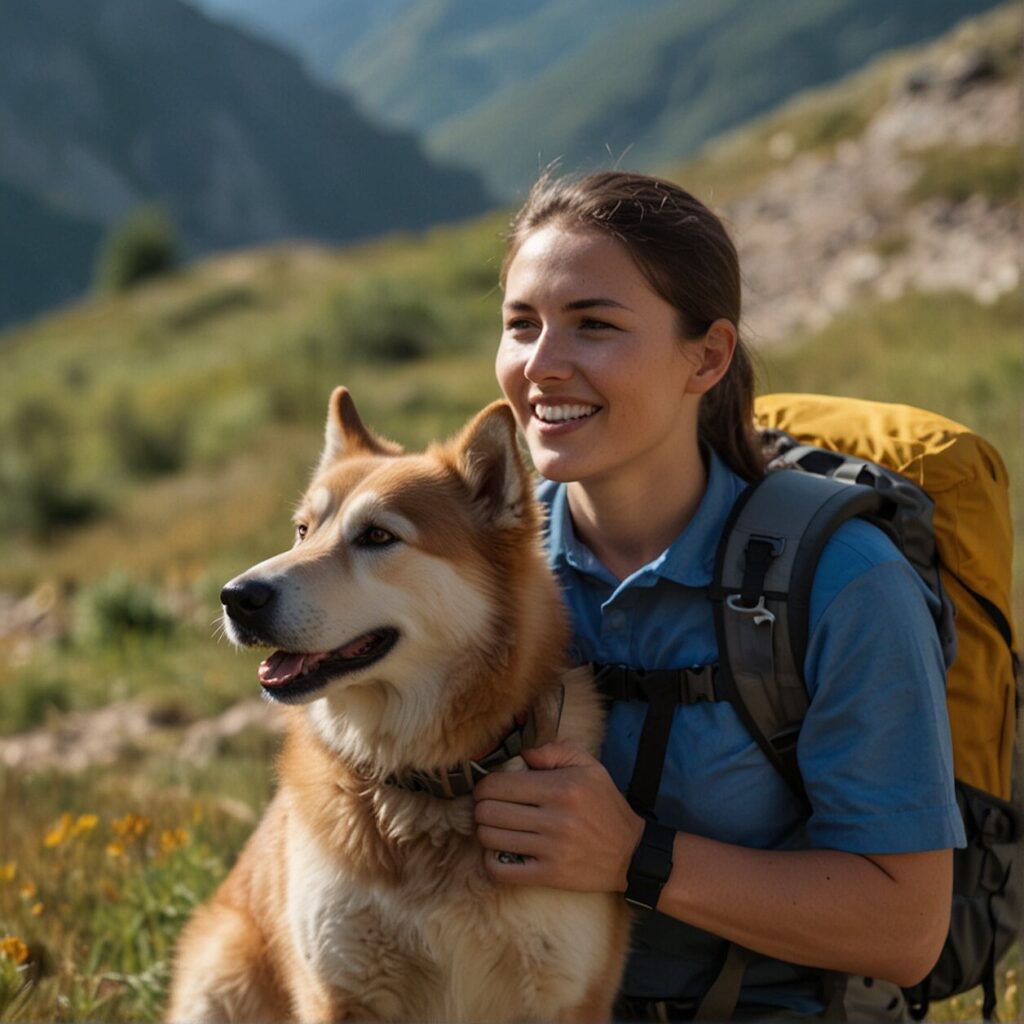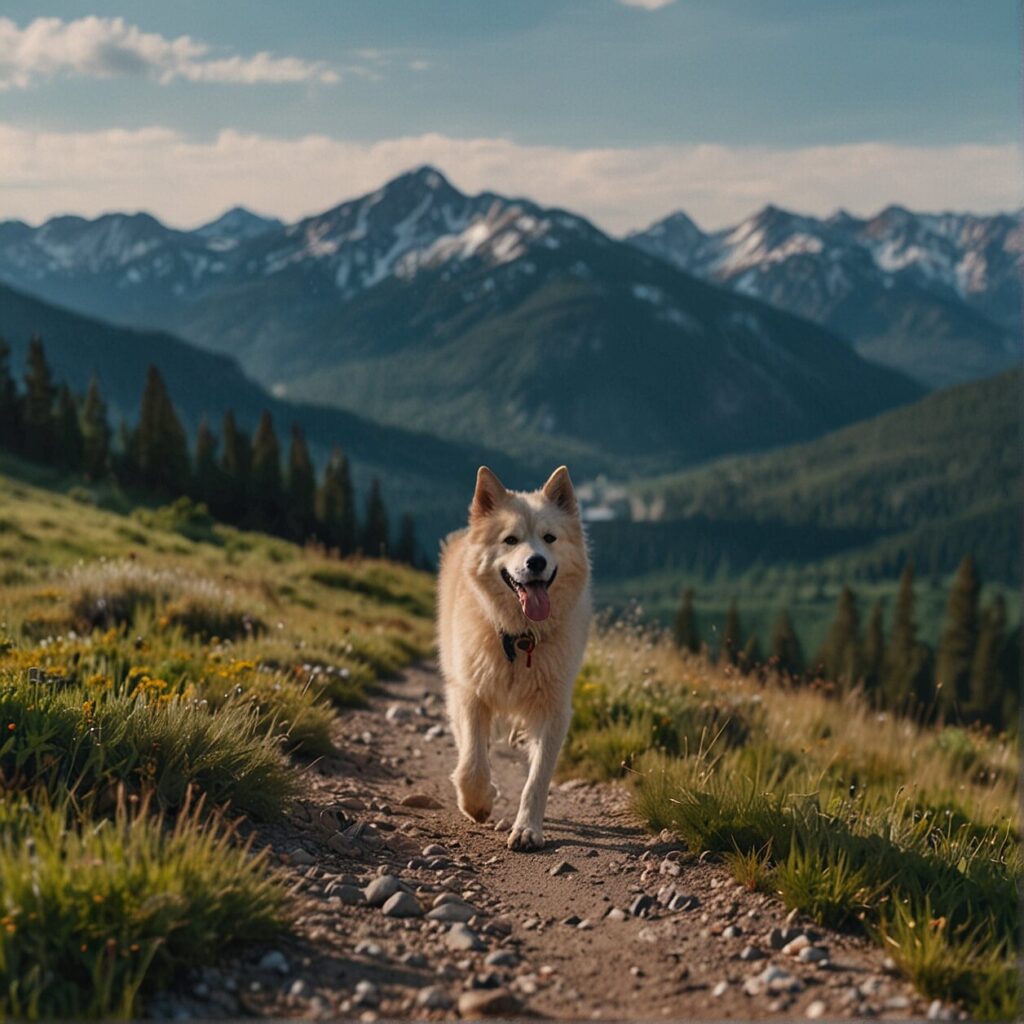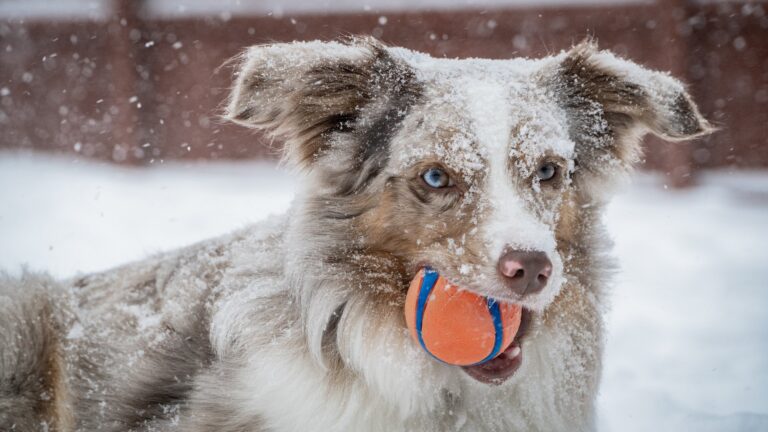An Adventure on Paws: Tips for Hiking with Your Dog in the Rocky Mountains
Welcome, adventure enthusiasts and dog lovers alike! Combining the thrill of hiking, the natural beauty of the Rocky Mountains, and the joy of spending time with man’s best friend – it’s a robust mix guaranteed to spark joy in every nature-loving pet owner. If you’ve ever wondered how to navigate this exciting experience while ensuring safety, comfort, and a pawsitively amazing time for you and your pup, you’re at the right place.
Our comprehensive guide here will walk you through everything you need to know about hiking with your dog in the Rockies. With first-hand advice on trail etiquette, identifying dog-friendly trails, understanding terrain, important safety measures, and more – this comprehensive guide has got you and your fur-baby covered.
“In every walk with nature, one receives far more than he seeks.” – John Muir, but when you’re hiking with your dog, the rewards are amplified with their infectious joy and enthusiasm.
So, leash up, pack your gear, and get ready to unleash an adventure of a lifetime with your four-legged friend in the spectacular Rocky Mountains.
Unleashing the Adventure: Pre-Hike Preparations for Your Pooch
First and foremost, succeeding in an adventurous hike with your dog in the Rocky Mountains begins with preparation – and lots of it. Your canine companion needs to be both physically and mentally ready for the hike. This means, prior to embarking on the journey, you should make sure your dog is in tip-top health. A quick visit to the vet can reveal any potential health issues that could be exacerbated by strenuous activity.
Regular exercise is paramount. Start with short, easy walks and gradually increase their duration and intensity. This not only helps build your dog’s stamina but also provides a practical opportunity for leash and recall training which is crucial for maintaining control on the trail. Remember, not all areas in the Rocky Mountains are off-leash, so your dog must be comfortable and obedient while leashed.
Also, it’s a smart idea to acclimate your pup to the unique conditions found at high altitudes. Depending on where you live, you might want to take progressively higher-altitude day trips. This helps your four-legged friend adjust to the lower oxygen levels, preventing altitude sickness.
Lastly, be knowledgeable about your intended trail. Familiarize yourself with trail rules and regulations, as well as the type of terrain you’ll encounter. For instance, if the trail is particularly rocky, it may be worth investing in dog boots to protect your furry friend’s paws.
Decoding the Climb: Understanding Terrain and Altitude
When hiking with your furry companion in the Rocky Mountains, it’s crucial to understand the terrain and altitude effects. Rocky Mountain’s terrain is characterized by its high-altitude environment, steep climbs, and diverse ecological conditions. As you venture higher, temperature fluctuations can be drastic, with colder temperatures and reduced oxygen levels. It’s important for both you and your canine pal to be prepared for such changes.
Altitude sickness can affect dogs just like humans. Symptoms in dogs include lethargy, loss of appetite, and difficulty breathing. Always monitor your pet closely and take breaks often as you ascend. If your dog shows symptoms of altitude sickness, descend immediately. Acclimatizing your dog to high altitudes slowly by increasing your hike’s elevation gradually over multiple outings can be beneficial. It’s always a good idea to consult with a veterinarian before taking your pooch on high-altitude hikes.
The Rocky Mountains’ rough terrain can pose potential hazards for dogs. A terrain with sharp rocks can hurt your pet’s paws, so it’s a good idea to invest in protective dog booties. Furthermore, unpredictable weather conditions such as sudden thunderstorms or blizzards could cause challenges. Make sure to check the weather forecast before your hike and be prepared to turn back if conditions deteriorate.
Trails can vary from wide, flat paths to narrow rocky trails requiring scrambling and jumps. Start with easy hikes and gradually increase the trail difficulty so your dog can adapt and gain confidence. Your dog’s health and physical condition should determine the type of trail you choose.
The goal is to ensure that both you, and your canine buddy have a safe and enjoyable hiking experience, regardless of the natural challenges posed by the terrain and altitude in the Rocky Mountains.

The Tail-Wagging Trails: Identifying Dog-Friendly Trails in the Rockies
As you plan your adventure, special consideration should be given to which trail you’ll explore. The Rocky Mountains, majestic as they are, provide a mix of canine-friendly and off-limits paths. Here’s how to sniff out the perfect dog-friendly routes for your avid four-legged explorer.
Firstly, remember that not all trails are dog-friendly. Conserving wildlife, flora, and delicate ecosystems is important, and some routes are protected. To avoid disappointment or hefty fines, research your intended hiking trails in advance. Use resources like the U.S. Forest Service website or apps like AllTrails to filter by dog-friendly options.
Dog-friendly trails will commonly feature leash requirements. Some will allow for off-leash exploration, but these are more the exception than the rule. Be ready for 6ft-leash laws and bear in mind that retractable leashes are often frowned upon. So, commit to being a responsible owner, keep control of your dog, and respect all posted leash laws.
It’s also important to consider the trail grade and environment to ensure your pooch pals’ safety. Favor solid, well-groomed paths over rocky terrains, specially for older dogs. Inclement weather can also significantly transform a trail’s condition, so always check for weather updates.
A few dog-friendly trail recommendations in the Rockies include Emerald Lake Trail in Rocky Mountain National Park, Maxwell Falls Lower Trail in Arapaho National Forest, and Sprague Lake Trail, also located in Rocky Mountain National Park. Take note, trails within National Parks often require that dogs remain on leash and on the trail.
Remember, preparation makes for perfect hiking adventures. Enjoy exploring with your furry friend!
Pack It In, Pack It Out: Essential Gear for Hiking with Dogs
Just like us, our four-legged buddies need to be equipped with the right gear for optimal safety and comfort during a mountain hike. Selecting the right array of essentials helps to ensure a successful hike with your dog in the rocky terrain.
Every journey into the Rocky Mountains requires a well-fitted dog harness or a collar. Opt for a harness that is easy to put on and take off and is comfortable for your pet. Remember, your canine buddy needs to feel at ease during the hike.
Leashes, preferably of a sturdy material and not too long, are a significant requirement. A 6-feet leash allows a good balance between freedom for your furry friend and control for you. Retractable leashes can pose a risk, as they may not provide enough control in unpredictable terrain or encounters with wildlife.
Bring along a portable water bowl and plenty of water to keep your dog hydrated throughout the hike. While it may be tempting to allow your pooch to drink from streams or lakes, be aware that these could contain pathogenic organisms harmful to your pet.
Dog booties can safeguard those adorable paws from rocky terrains, snow, and hot surfaces. It’s vital that these fit properly to avoid discomfort for your dog. And do not forget to carry a few extra in case one or two get lost or ripped!
A doggy first aid kit is a must-have. Include items such as bandages, tick removal tools, antiseptic wipes, and a small towel in your kit. Information on first aid for dogs and the contact number of a local vet could be quite handy too.
And lastly, pack pick-up bags for your pooch’s potty breaks. It’s a good practice to clean up after your dog and ensure the trail remains unpolluted and inviting for other hikers.
Equipping your canine companion with these essentials is an important step towards a memorable outing amidst the majestic Rocky Mountains.

Sniffing out Safety: Recognizing Wildlife and Plant Dangers
The Rocky Mountains are home to a vibrant variety of wildlife, many that are harmless, but some that could pose potential risks to your canine companion. Sprouting alongside these creatures is a diverse array of plant life – some beautiful, some peculiar, but a few are noxious to dogs. As a responsible guardian, it’s your job to identify potential threats and steer clear.
Common wildlife in these areas include large mammals like elk, deer, moose, and bear. Threats from these animals are typically low if you manage to control your dog and maintain adequate distance. Predatory species, such as mountain lions and coyotes, may pose more significant peril. Small animals like porcupines, skunks, or venomous snakes may also present risks if provoked. Be sure to keep a vigilant eye and footfall angle, train your dog to recall and remain close, carry a deterrent if necessary, and do not approach or feed wildlife intentionally.
On the flip side, the Rockies also hosts an assortment of plants that may potentially harm your dog. Poison Ivy, Oak, or Sumac can cause severe allergic reactions in dogs – particularly those with short coats or sensitive skin. Blue-green algae in lakes and streams, foxgloves, death camas, different types of mushrooms, and a variety of other plants can be toxic if consumed. Always prevent your pup from eating unfamiliar plants and make sure they have plenty of safe, clean water to drink to prevent temptation.
Prudence in understanding these potential threats goes a long way in safeguarding your dog. But, if your dog does have an unfortunate encounter with any harmful wildlife or plant, it is important to consult a veterinary professional immediately for advice. Knowledge and common sense are your best tools in these situations, so you and your four-legged friend can enjoy the wonders of the Rocky Mountains safely.
FAQ’S
Welcome, trailblazer, and let’s not forget your tail-wagging sidekick! If the thought of exploring the scenic beauty of the Rocky Mountains with your four-legged friend excites you, this guide is your perfect starting point. Here, we’ve compiled all the essential information you need for a fun, safe, and memorable hiking adventure with your canine companion amidst the picturesque Rocky Mountains. So, stick around as we navigate through dog-friendly trails, unravel trail etiquette, and uncover safety measures to ensure your mountain hike is nothing short of paw-some!
What is the trail etiquette when hiking with dogs in the Rocky Mountains?
Conducting yourself appropriately while hiking with your dog in the Rockies isn’t just a matter of courtesy, it’s also vital for the wellbeing of the wildlife, other hikers, and the pristine environment. Here are a few etiquette pointers to follow:
Keep your dog leashed: This is not just a suggestion, but an actual requirement on many trails. Keeping your dog on a leash prevents them from chasing after wildlife, disturbing other hikers, or venturing off the trail and damaging delicate ecosystems.
Pick up after your dog: Always carry poop bags and clean up after your dog. Leaving their waste behind not only affects other hikers’ experiences but can also affect wildlife by introducing non-native parasites and diseases.
Manage barking: Dogs that bark excessively can disturb wildlife and other hikers. It’s crucial to train your dog to minimize unnecessary loud noises.
Yield to others: When you encounter others on the trail, it’s standard etiquette to step to the side with your dog to let them pass. Shorten your leash and keep your dog close, particularly if they are large or bouncy.
Respect rules and signage: Some trails have specific restrictions to protect sensitive flora, fauna, or cultural features. Paying close attention to these can mean the difference between a successful, enjoyable hike and causing harm to these critical environments.
In essence, being a responsible and considerate dog owner on the trail ensures everyone can enjoy the awe-inspiring beauty of the Rocky Mountains.
What safety measures should I take when hiking with my dog in the Rocky Mountains?
Your dog’s safety should be a top priority when venturing out into the beauty of the Rockies. Implement these core principles to keep your four-legged adventure partner safe and sound.
Firstly, always keep an eye on your dog. Even if you’re in a safe, designated area, the occasional critter might dart out and grab your dog’s attention. Always keep them under control and within your sight to prevent any mishaps.
Secondly, think about investing in doggy boots. Their sturdy material protects your dog’s precious paws from rough terrain and extreme temperatures. As an added benefit, they also help to minimize trail destruction.
Next, ensure that your dog is up-to-date with all vaccinations. In the Rockies, wildlife encounters are common, and you want to be sure your dog is protected against diseases like rabies and leptospirosis.
Also, carry a snake bite kit and know how to use it. While encounters with venomous snakes are not common, it’s always better to be prepared if you’re bitten, or worse, if your dog is bitten.
Lastly, remember that the weather in the Rockies can be unpredictable. Pack warm blankets and ensure your dog has a way to keep warm in case temperatures plummet unexpectedly.
By adhering to these measures, you can ensure your trek in the Rockies is as safe as possible for both you and your dog. Remember, safety first and happy trails!
What is the best time of year to hike with my dog in the Rocky Mountains?
The best time to hike with your dog in the Rocky Mountains varies depending on a few factors, primarily the dog’s breed and overall health, as well as your mountain climbing experience and fitness level.
Generally, late spring to early fall (May through September) offers the most pleasant weather for hiking with your furry companion. During these months, temperatures are more bearable, and rainstorms, while still possible, are less likely. Understand that higher altitudes mean cooler temperatures, so even during the summer, it can be quite chilly at higher elevations.
Avoid hiking with your dog in the Rocky Mountains during winter unless both you and your dog are experienced and equipped for harsh conditions. Snow and icy conditions can increase the risks for both you and your pet, including the danger of slipping or exposure to extreme cold. Some breeds may do well in cold weather, but others may struggle considerably.
We recommend checking the local weather forecast before venturing out on a hike. Always remember: your dog’s safety and comfort should be your main priority. Pay attention to your dog’s behaviors and conditions. If they show signs of discomfort or distress due to the weather or terrain, it’s best to head back.
One more thing to consider: Keep your dog’s age and fitness level in mind. Puppies and older dogs may have a harder time managing long or strenuous hikes. Observe your dog during the hike and adjust your pace or even turn back if necessary. The adventure should be fun and safe for both of you.
What are some tips for keeping my dog hydrated during a mountain hike?
Hydration is key to keeping your furry friend comfortable and healthy on your hiking adventure. Here are a few tips that can help ensure your dog remains well-hydrated throughout the hike:
1. Carry Plenty of Water: Be sure to pack enough water for both you and your dog. As a general rule, an active dog should have about one ounce of water per pound of body weight each day.
2. Hydration Breaks: Just like us, dogs need regular breaks to rehydrate. Offering water to your dog every 15-30 minutes during the hike can be extremely beneficial.
3. Mobile Water Bowl: Consider investing in a collapsible or portable water bowl. They are light to carry and can provide an easy way for your dog to drink.
4. Don’t Allow Drinking from Natural Sources: Stagnant ponds and water bodies can be full of harmful bacteria and parasites. Always discourage your dog from drinking unverified water sources.
5. Hydrate Before the Hike: Just as you might drink water before a workout, giving your dog plenty of clean water before the hike can help prepare their body for the exertion to come. This is especially crucial if you plan to hike in hot weather or at high altitudes.
By following these guidelines, you’re doing your part to keep your dog safe and hydrated on your hiking adventures in the Rocky Mountains!
How can I train my dog for hiking in high-altitude areas like the Rocky Mountains?
Just like humans, dogs also need some level of physical conditioning and preparation before embarking on an alpine adventure. Here are some essential tips to get your furry friend ready for the Rockies.
Incremental Exposure: Begin by taking your canine companion on short and steady walks in your local areas with mild elevation. Gradually increase the distance and altitude of your hikes to help your pup build the required strength and stamina. This will also allow them to adjust to the changing physical demands and environmental conditions gradually.
Proper Paws Protection: Rocky terrains can be tough on your dog’s precious paws. Introduce your dogs to wearing booties during your local walks so they can get used to them. Having protective footwear will shield their pads from sharp rocks, hot/cold surfaces, and other potential hazards on the mountainous path.
Practice Recalls and Commands: In the mountains, strong recall commands and good trail behavior are paramount for your dog’s safety, as well as others’ on the trail. Work on honing their skills in a controlled environment before heading to the Rockies. ‘Come’, ‘Stay’, ‘Leave it’, and ‘Quiet’ are some of the crucial commands they must respond to immediately.
Vet Check-ups: Before heading to higher altitudes, ensure your dog is in peak physical condition. Get a veterinary check-up to ascertain that they’re fit enough for the strenuous exercise that comes with mountain hiking. The vet could advise adjusting your pooch’s diet or exercise routine to better prepare them for the big adventure.
Know Your Dog’s Limitations: Despite proper training, not every dog is built for high-altitude hikes. Consider the breed, age, health, and physical condition of your dog before planning a mountain trek. Know when to call it a day and never push your dog beyond their comfort zones.
Hiking with your canine can be an exhilarating bonding experience when done with proper planning and preparation. The mountain is calling, prepare well and enjoy the huff-puff and woof-woof journey.







